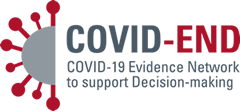Living guidelines
One of the perennial challenges of CPGs is that their development and updating is slow, often with months or years between a guideline and the next update. The COVID-19 pandemic has demanded a different approach, and guideline developers are rising to the challenge, bringing the concept of living evidence and guidance to the fore with dynamic updating of recommendations once new practice-changing evidence is publicly available. Innovated processes have been used such as applying digital technology over the past few years – based on best current methods and standards for both systematic reviews and guidelines (Huseyin et al., 2020; Vandvik et al., 2020).
A living guideline is defined by “an optimisation of the guideline development process to allow updating of individual recommendations as soon as new relevant evidence becomes available” (Akl et al. 2017). In general, if developed under high-quality standards, living guidelines are optimal as they provide up-to-date evidence-based guidance. However, living guidelines require significant human resources and capital and often require automated processes such as literature monitoring for newly published studies and synthesis.
Examples of living guidelines for COVID-19
The Cochrane Collaboration and scientific journals like the Annals of Internal Medicine and BMJ publish living systematic reviews for COVID-19. Recent experience with Australia’s National COVID-19 Clinical Evidence Taskforce illustrates how a comprehensive set of recommendations can be dynamically updated weekly based on new practice-changing evidence, from a living network meta-analysis, further facilitated by innovative processes and digitally structured data in interoperable platforms (e.g., MAGICapp). Such platforms allow for immediate global dissemination of recommendations, interactive evidence summaries and decision aids that are available for re-use, adaptation and implementation.
The World Health Organization (WHO), American College of Physicians (ACP), and other prominent guideline development organisations are now moving towards producing living guidance for COVID-19. Some are dedicated to sharing evidence and recommendations in a globally-concerted effort, aiming for four weeks from evidence to publication. The WHO living guidelines on drugs for COVID-19, also published as BMJ Rapid Recommendations, illustrates how such global collaboration and iterative guidance development can work, informed by living network meta-analysis. They are authored, dynamically updated and published online in user-friendly formats making use of the MAGICapp. One of many identified challenges challenges is the comprehensive peer-review and publication process, slowing down time to dissemination of the guidance, as compared to the more speedy Australian guidelines with weekly updates. ACP as well, is collaborating with other leading organizations to ensure sharing resources, avoid duplication, encouraging harmonization has shown that development of rapid and living guidance is possible while working together with other groups (Qaseem et al., 2020).
